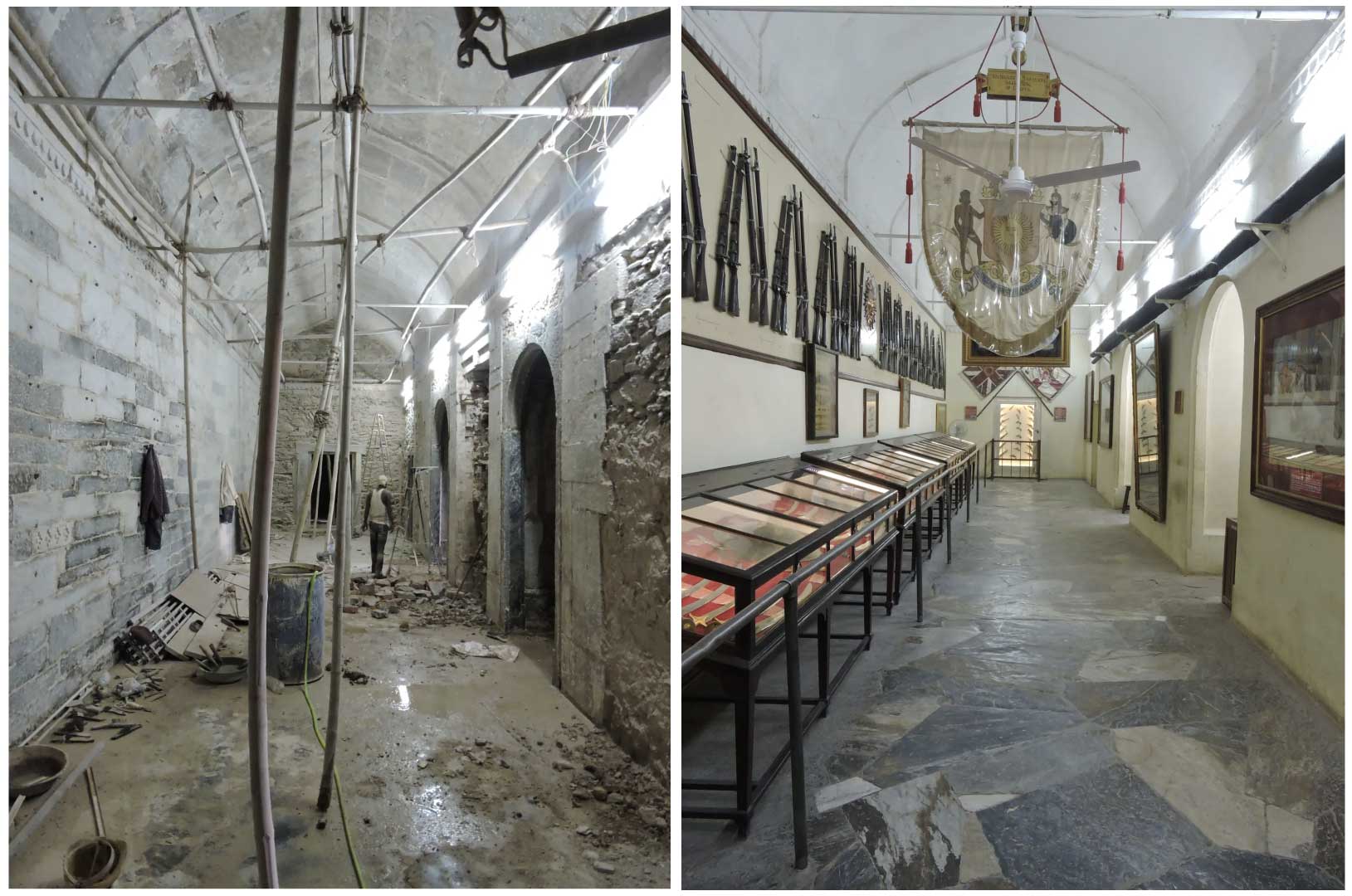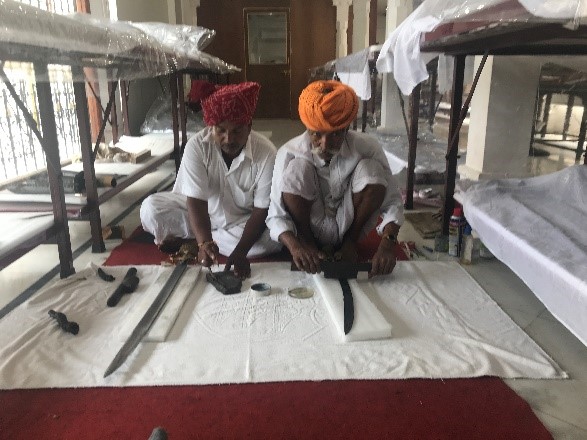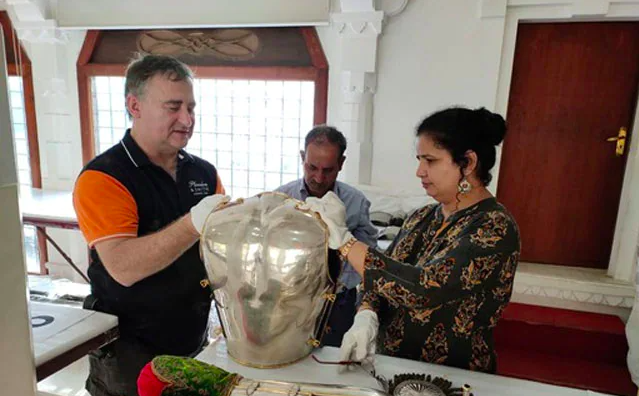UK professionals engaged local artists to revamp Salehkhana (Arms gallery) in Udaipur’s City Palace

SalehKhana witnessed the coming together of world-class professionals & traditional artisans as the arms and armoury gallery of The City Palace Museum, Udaipur gets a new lease on life in the twenty-first century through an ambitious conservation project led by Centre for Art Conservation & Research Experts (CARE).
The curatorial challenge was to take museum visitors on a journey through time, with the artefacts revealing stories of their origin, use and significance which are often lost to modern audiences.
The first phase of mounting and installation of the arms and armoury at Saleh Khana was completed in September-October 2019.
Become a Premium Member to access our exclusive contents: https://authindia.com/premium-community-membership/ Dr Vandana Singh, an experienced conservator and managing director of Centre for Art Conservation & Research Experts (CARE), leads a team of three assistant conservators who have conserved and restored over 700 artefacts including swords, firearms and objects of warfare. Every process of their conservation has been documented and computerised for ease of access and reference.
According to Dr Vandana, “In our work, we have to use conservation grade materials besides following the standard norms of conservation which we have been practising for years. These conservation grade materials are reversible. Our focus is to maintain the originality and integrity of the artefact we are conserving.”

One of the earliest structures to be built in the City Palace, Udaipur, the Salehkhana’s (a storage area for arms) construction began with the initiation of the palace by Maharana Udai Singh II in 1559 C.E. The royal guests used to keep their weapons here before they were allowed to meet the Maharana.
As per Rahul Shukla, Project Engineer at the site, the existing cracks in stone beams were addressed with the crack stitching method based on visual inspection so the interventions were proposed. These included the removal of later infill in the openings and recreating a new structural system in five places.
To retain the authenticity and evoking a sense of timeless Mewar heritage, traditional materials like lime were used in the construction and the conservation works included removal of deteriorated lime plaster, cleaning of stone and lime pointing of the corbelled roof and the stone gokhdas. After this, new lime plaster or araish work was performed.

The natural stone setting, floral or geometric motifs retained during the renovation turned the space into architectural heaven . The araish work was done using traditional methods and materials turned this s by skilled masons and artisans from Mewar. The exhibited items manifest the pomp and pageantry of the Mewar royals.
As they preserve the glory of a centuries-old build, and showcase the rich architecture styles of yore to future generations.The artefacts now being displayed at the Saleh Khana have been restored to their original finery. Visitors will marvel at the sharpness of the swords’ edges, the designs of the body armours, and the glorious colours of scabbards.
After years of painstaking work, it is finally ready to be unveiled and stands as an exemplary example of how old heritage buildings can be adapted to modern use. With people awe-struck by the spectacular displays, another glorious chapter in the history of Saleh Khana will have begun.

